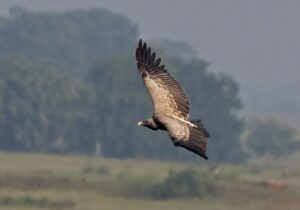A passion for the natural world drives many of our adventures. And when we’re not actually outside, we love delving into the discoveries about the places where we live and travel. Here are some of the best natural history links we’ve found this week.
Giant tortoise stuns scientists by eating baby bird: A giant tortoise has been caught on camera stalking and eating a young tern chick in the Seychelles. No one has ever witnessed such behavior before. “It’s totally surprising and rather horrifying,” said study author Justin Gerlach. “The tortoise deliberately pursues this bird, kills it, and then eats it. So yeah, it’s hunting.” In the video, the female tortoise approaches the chick, which perches on a log. As it gets closer, the bird flaps its wings, but this does not deter the tortoise. It lunges forward and snaps down on the chick’s head, then swallows it whole.
Blue whales return to Spain’s Atlantic coast: Blue whales have not turned up on Spain’s Atlantic coast for decades. The area’s whaling industry had driven them to near extinction. In 2017, marine biologist Bruno Diaz spotted a blue whale near Ons Island. Since then, the whales have also returned in 2018 and 2019. Two of these individuals came back in 2020, and about a week later, another blue whale appeared off the Islas Cies. Researchers are now monitoring the whales’ migration patterns and behavior in the region. It is too early to say whether the memory of previous migrations has brought the whales back, or whether climate change has affected their movements.

The skull and jaw of the ancient Toalean woman, South Sulawesi, Indonesia. Photo: Hasanuddin University
Where the Denisovans and modern humans collided
Ancient remains in Indonesia belong to a vanished human lineage: A woman buried 7,200 years ago has turned up in a cave in South Sulawesi, Indonesia. Genetic analysis revealed that she belongs to a human lineage that doesn’t exist anymore. She is a distant relative of present-day Aboriginal Australians and the indigenous people on the islands of New Guinea and in the western Pacific. She has a significant amount of DNA from the Denisovans, an archaic human species. These discoveries suggest that Indonesia and the surrounding islands were “the meeting point for the major admixture [mating] event between Denisovans and modern humans on their initial journey to Oceania,” said Cosimo Posth, the study’s co-leader.
Four-hundred-year-old coral in Great Barrier Reef: Just off the coast of Goolboodi Island lies the widest standalone coral in the Great Barrier Reef. It is 10.4 metres in diameter and has earned the nickname Muga dhambi, “big coral”. Marine scientists have estimated that it is 421-438 years old. This means that the coral has survived 80 cyclones and 99 coral bleaching events. “Knowing that these things exist and have persisted for a long time helps to provide a renewed sense of hope for the future,” said marine scientist Nathan Cook.

Bettongs are being reintroduced to South Australia. Photo: Shutterstock
Brush-tailed bettongs reintroduced in South Australia: The brush-tailed bettong is critically endangered in Australia. Introduced species such as foxes and cats have led to a huge decline in their populations. In South Australia, the marsupials disappeared over 100 years ago. Now a major rewilding program aims to bring these locally extinct creatures back to the area. Last week, 28 females and 12 males were released into Dhilba Guuranda-Innes National Park. They came from Wedge Island, over 1,600km away, where a healthy population continues.
A new type of planet
Will extraterrestrial life turn up in the next two to three years?: Researchers at the University of Cambridge have identified a new class of habitable planets. Hycean planets are hot, ocean-covered bodies with hydrogen-rich atmospheres. Astronomers believe that searching specifically for Hycean planets could help us find life outside our solar system in the very near future. Hycean planets are much larger than Earth and have baking atmospheric temperatures up to 200ºC, but their oceans could hold microbial life.

White-necked Jacobin hummingbird. Photo: Shutterstock
Female hummingbirds have pretty plumage to avoid being harassed: Male white-necked Jacobin hummingbirds have bright blue heads and throats. Although females often have duller plumage, some do have blue feathers. Birds often have bright feathers to attract a mate, but scientists found that the blue plumage on the females did little to attract males. Instead, the blue feathers allowed females to blend more with their male counterparts and feed for longer without harassment.






